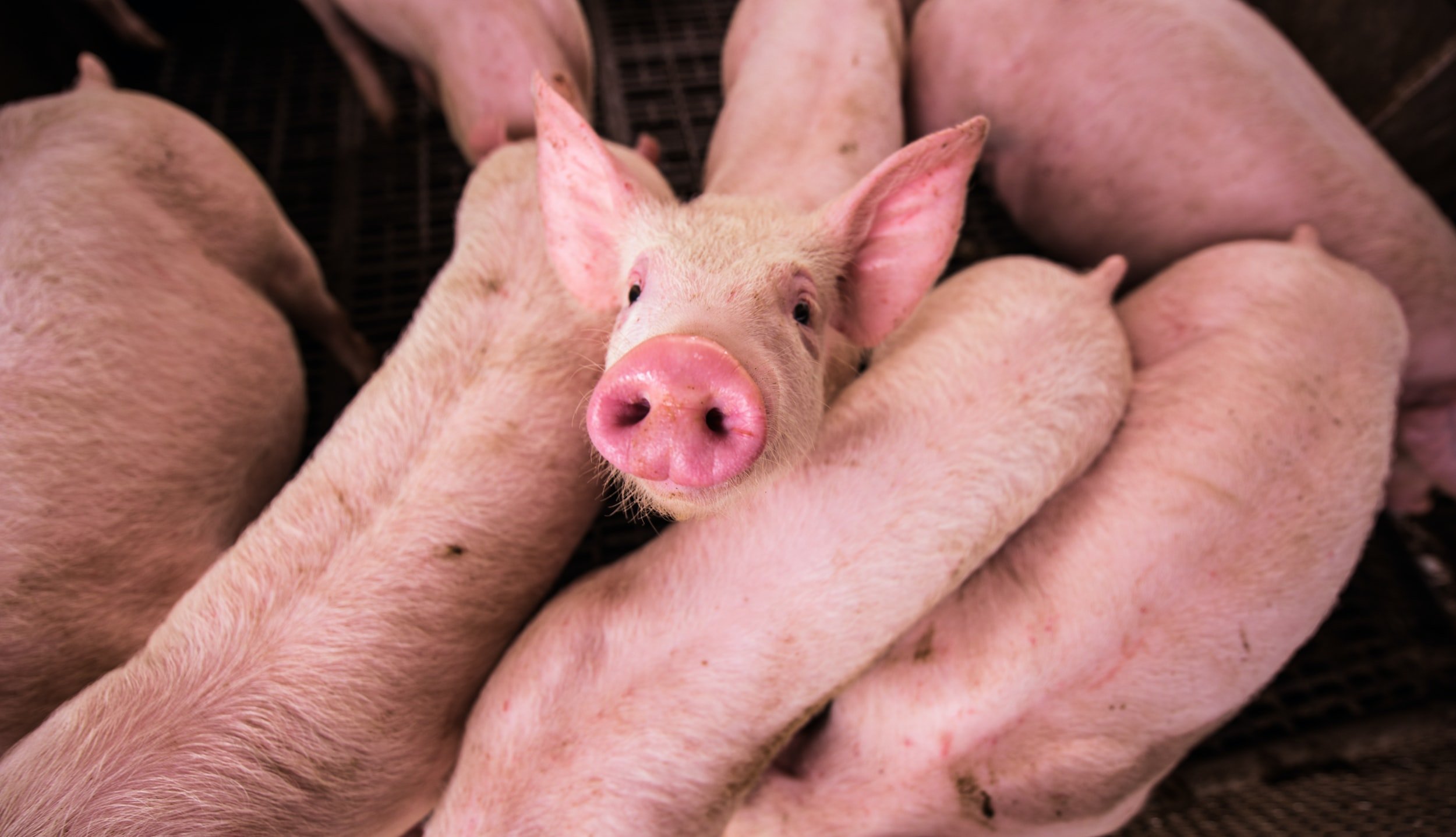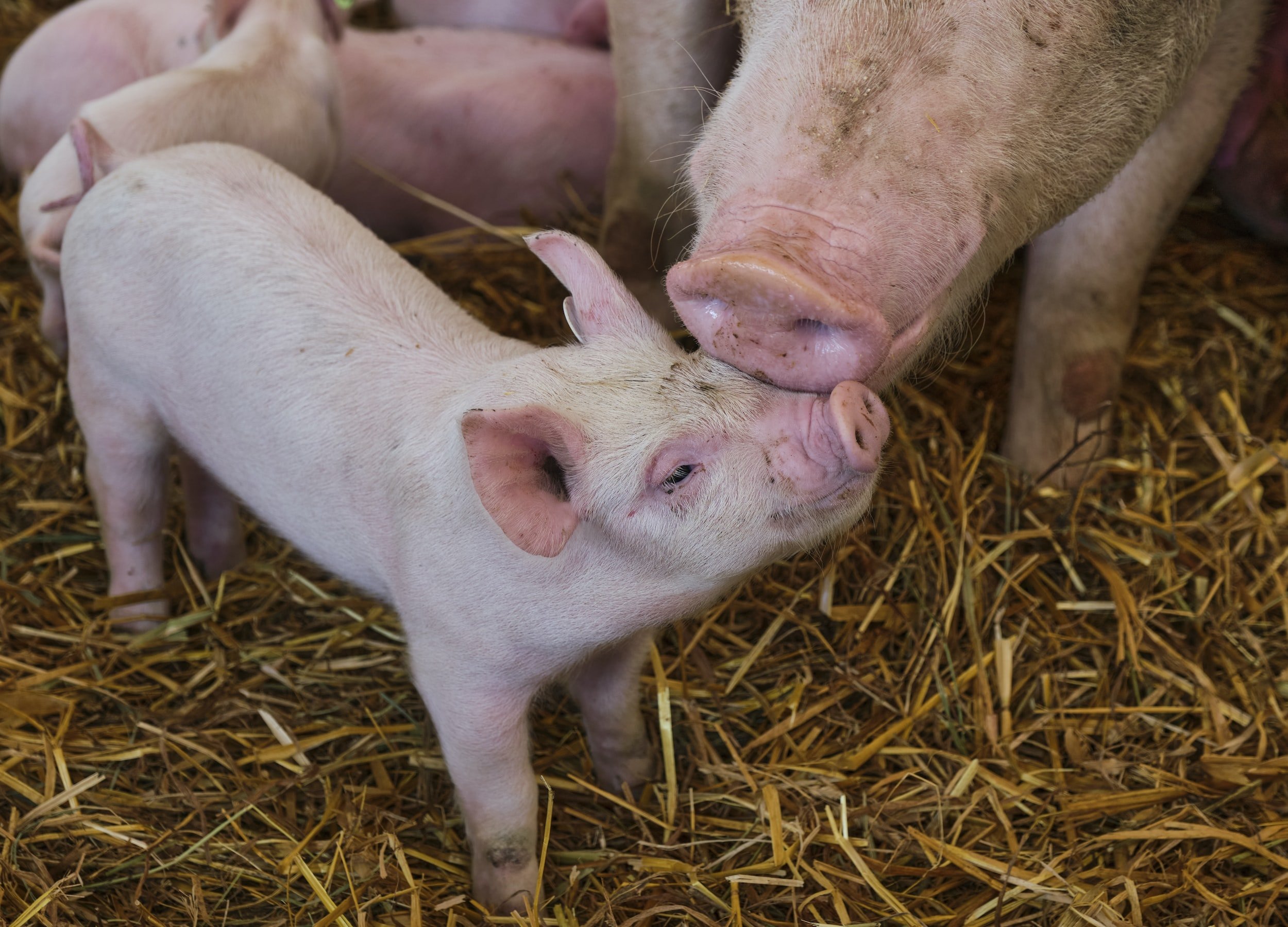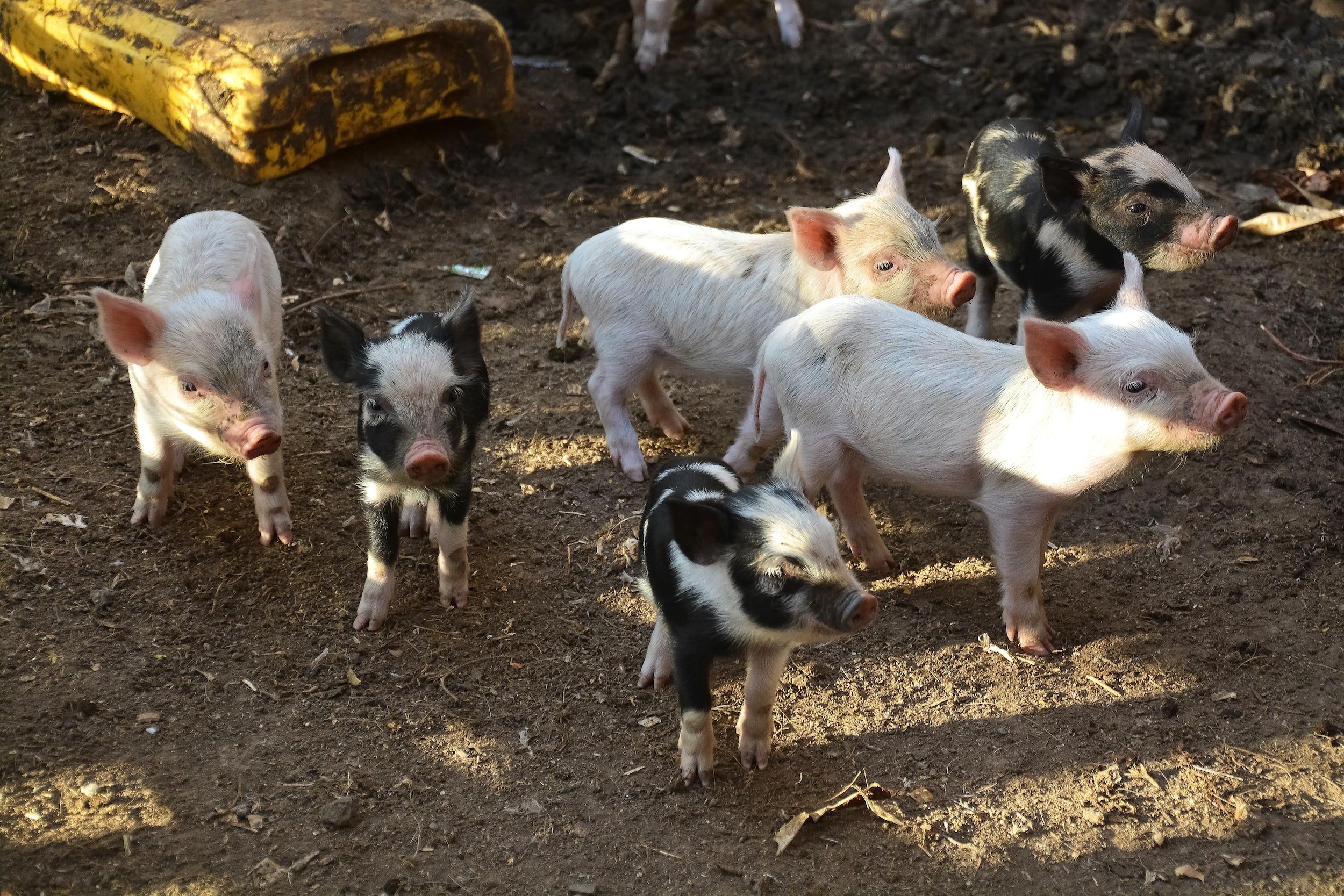Do Pigs Sweat? How to Keep Pigs Cool During the Summer
Raising pigs can be a challenging experience when it comes to the summer months. Because they don’t have functional sweat glands, taking care of them is trickier than your other farm animals.
Your pigs will be unable to keep themselves cool without assistance from you or the environment. They often wallow to cool off, which is how they have become associated with being dirty. With proper housing and feeding, you can ensure your pig stays cool.
If you’re interested in learning more about what causes your pigs to overheat and how to help them stay cool, you should read on.
I’ll tell you everything you need to know!
**J&R Pierce Family Farm is a participant in the Amazon Services LLC Associates Program, an affiliate advertising program designed to allow sites to earn advertising fees by linking to products on Amazon. I often link to Amazon when recommending certain products, and if you choose to purchase, I may earn a small percentage of the sale. It costs you nothing extra, and all recommended products are ones that I personally vouch for. **
What Animals Cannot Sweat?
While mammals are the only animals with sweat glands and are physically capable of sweating; however, several cannot sweat, including the pig, the most famous animal that cannot perform this bodily function.
Other animals that cannot sweat include, but are not limited to:
Hippos
Rhinos
Whales
Dolphins
Porpoises
Vultures
Storks
Zebras
Jackrabbits
Seals
For more information on the subject, check out this video:
Do Pigs Sweat Through Their Skin?
Pigs do not sweat; however, they can remove heat through other ways, such as via their skin and respiration. Not sweating should not be confused with a buildup of toxins.
Pigs are typically fed well-balanced diets and kept in temperature-controlled environments. Because of this, they are not exposed to or given access to anything toxic. If a pig were exposed to toxins, it would be rid of them just the same way we would be.
How Do Pigs Cool Down?
Pigs are endotherms, which means that their body temperatures are regulated by internally occurring biological processes that create heat. Mammals have two distinct homeostatic mechanisms that maintain thermoregulation equilibrium.
They have a high degree of internal temperature control because one of these mechanisms will increase body temperature while the other will decrease it. Internal temperatures can be maintained at ideal levels for the body’s essential enzymes to function.
Internal temperature is a significant balancing act. When heat loss exceeds heat generation, the body will compensate by raising the metabolic rate and inducing shivering.
When heat generation exceeds heat loss, the endotherm will employ traditional cooling methods like panting.
Pig Heat Loss
Pig heat loss comes in the form of sensible and latent heat loss. Heat loss occurs by three primary mechanisms – radiation, convection, and conduction and all three require a difference between the temperatures of the warm animal and the cooler environment.
As the surrounding environmental temperature increases, the pig’s body will redistribute its blood toward the skin to increase latent heat loss.
More significant temperature increases reduce the difference in temperature of the pig’s body and the environment, and the ability to regulate body heat through convection, conduction, and radiation drastically reduce until the animal only has evaporation.
Pigs are also well-known for their subcutaneous layer of fat that impedes sensible heat loss. Because of this fat, pigs depend more on respiration or panting to dissipate heat.
Other Options
If their attempts to minimize heat production while maximizing heat loss do not work to the standard they require, they will attempt one or more of the following:
They will consume less food when they are too hot to slow heat production through normal body processes.
They will move less to avoid the creation of heat.
Pigs experiencing too much heat will drink profusely to cool down their systems.
They will lose heat to their environment through convection, conduction, radiation, and evaporation.
Convection is the process of transferring heat from the pig to the air around it. During warmer conditions, pigs will dilate their blood vessels to stimulate blood flow, maximizing this type of heat transfer. Up to 35% of heat loss can be accounted for this way.
The direct transfer of heat from one surface to another is conduction. This method makes up 10-15% of heat loss for pigs. Pigs will often dig back the top layer to reach the cooler soil beneath before wallowing in it to cool off.
The process of transferring heat from the pig to the surroundings with no direct contact is known as radiation. Consider a hot pig standing in a shady, breezy paddock; the pig can experience up to 30% heat loss through its position.
Evaporation is the process of something changing from a liquid state to a gaseous state, and with pigs, it can account for up to 25% of heat loss.
Heat Stress in Pigs
Heat stress occurs when the pig’s body is receiving more heat from the environment or through digestion than it can release to the environment. Its first reaction will be to dilate the blood vessels near the skin’s surface to transfer heat out.
The second response will be to start panting, which will also be a clinical sign of heat stress. The animal may reach its upper critical temperature when its core temperature becomes dangerously high. Results include decreased growth and death in extreme cases.
In addition to an increased respiratory rate, if your pigs are suffering from heat stress, they may exhibit the following signs:
Excessive water intake
Loss of electrolytes
Reduced activity
Lying prone on the floor, stretched out, separated from the others
Tips for Keeping Your Pigs Cool in the Summer
As you can see, it is essential to help a pig maintain its temperature to remain cool. The summer months can be hazardous to any animal, but even more for an animal that does not sweat.
Heat stress is not entirely avoidable; however, you can take steps to mitigate it. You can alter their diets to support them in the heat of the summer, ensure they have access to fresh water constantly, and create wallowing spots for them to cool off.
Follow these tips to keep your pigs cool this summer.
Provide an Adequate Source of Water
Your priority is to ensure that your pigs have a good source of cool, fresh drinking water. They must have access to this water at all times. The hotter it gets, the more they will drink.
Additionally, the more pigs you have, the more waterers you need. Pigs will fight over a water source if there is not enough. Offer twice as much water as they usually drink as their intake will be much higher.
You can also set up drip lines or sprinkler systems so your pigs can get wet. Make sure you set up an area in their pen to allow them to dry off. This is a great way to provide the opportunity for your pigs to use evaporation to cool down.
Provide Shade
Your pigs’ pasture or pen will need a lot of shade. They have to be able to escape the harsh rays of the sun. Otherwise, they will overheat and experience sunburns.
Wooded areas are the best option for shade, but you can also build them some coverage. This can be a lean-to-like structure or a barn. They just need something that will allow them to escape from the sun for some time periodically throughout the day.
Check Your Ventilation
The ventilation in your pig barn needs to be fully functional, removing the old, stuffy air from inside and replacing it with cooler, fresh air from outside. Your exhaust fans need to be in good working order, and your intake fans cannot be blocked.
Inspect for air leaks around the doors and walls. These leaks may be detrimental to the proper airflow.
If you have outdoor pigs for which you have constructed a building, make sure it is designed to have two or more sides opened up to allow for ventilation. Ventilation is a critical part of the evaporation process.
Use Cool Cells
Cool cells are often used in sow units but also in finishing barns. They have water that reduces the barn’s internal air temperature through evaporation.
Hot air from outside gets pulled through the cool cell, and the resulting cool air is introduced into the barn. This can drop the air temperature by 20 degrees or more.
Have a Backup Plan for Your Ventilation
It is crucial to have a backup plan for your ventilation and make sure that it works. You cannot have your pigs in a bar with no flowing air. Periodically test your alarm system, backup generators, and emergency curtain drops.
Everything needs to be kept in working order so that it is available in case of an emergency.
Create Wallowing Spots
Your pigs need to cool off, and wallowing in mud will help them do this. You can make your own if you do not have any large muddy areas in your pasture. Run a hose out to the pigs’ pasture and create several wallowing holes, enough to accommodate everyone.
Not only will the cool mud help with rising temperatures, but once it dries, it will form a protective barrier on the pigs’ skin to keep the sun from burning them. It’s like sunscreen for your pigs.
Adjust Feeding Times or Use Automatic Feeders
During the summer, the heat will cause your pigs not to want to eat as much. Because of this, you will need to adjust their feeding times. If you feed them once or twice a day, there is an excellent chance that you will find them at a hungry time.
However, you need to be on the lookout for leftover foods. These are attractants for rodents and other small animals. They are especially a problem in the summertime.
Using an automatic feeder can help reduce the problem associated with these pests. The feeders are secured against pests, and your pigs will be able to eat when they want to with no worries about leaving food behind.
Offer Frozen Treats
While this won’t significantly impact your pigs’ temperatures, you can offer them frozen treats. It will be more of instant gratification that provides some relief from the heat. Consider popsicles, frozen fruits, and ice cubes mixed into their food buckets.
Make Diet Adjustments
Digesting fiber will cause your pig to release more heat, so while they typically eat high-fiber foods, switch them to more protein-rich options during the summer. Include options with more fat and vitamins (particularly pig iron mixes). The combination will provide you with better overall results.
Choose the Right Breed
Certain breeds are heat tolerant, and others are just not meant for heat. Make sure if you live in an area that gets extremely hot that you have chosen the right breed.
Lighter-colored pigs are more susceptible to sunburns and high temperatures. Darker-skinned pigs are the better choice for warmer climates as they can handle the more extreme heat better.
Increase Available Floorspace per Pig
Allow more floor space per pig during times of potential heat stress. You’ll want to ensure that your larger, more susceptible pigs have even more space available. Your pigs need to be able to dissipate heat and will not be able to do this without enough space.
Adequate Insulation
Ensuring that your insulation is adequate and regular maintenance will help keep your pigs cool. It will need to be inspected at least once a year for rodent infestations as they can decrease the R-value, or insulating value, of the insulating material.
Proper insulation will help prevent solar energy buildup in the summer, keeping your pigs as cool as possible.
Final Thoughts
Pigs are unique because they do not have functional eccrine sweat glands, making it challenging to maintain their body temperature when the weather gets hot. Through environmental and human assistance, pigs can maintain a safer body temperature.
You can provide your pigs with shelter in their pasture and a sprinkler system to assist with cooling off. Also, ensuring you have picked the right breed for your climate will bring the best results in handling the temperatures in the summer.
Adjusting their diet to more seasonally appropriate foods will also help their temperature control.
Ensure you have adequate ventilation and enough floor space per pig.
By taking care of your pigs, they will be less likely to experience heat stress - and you’ll be able to raise healthier, more productive pigs, too.
Want to learn more about farming? Be sure to check out these featured articles!
Subscribe to our email newsletter for regular tips and tricks on homesteading and farming – wherever you are. You can also follow us on Instagram (@jrpiercefamilyfarm) and Pinterest (J&R Pierce Family Farm) for frequent updates. Happy homesteading!






